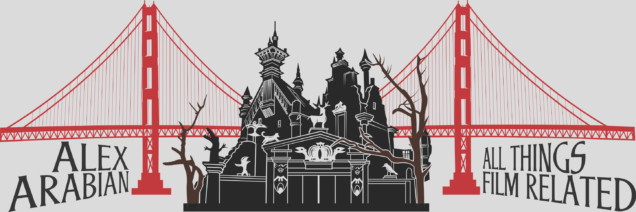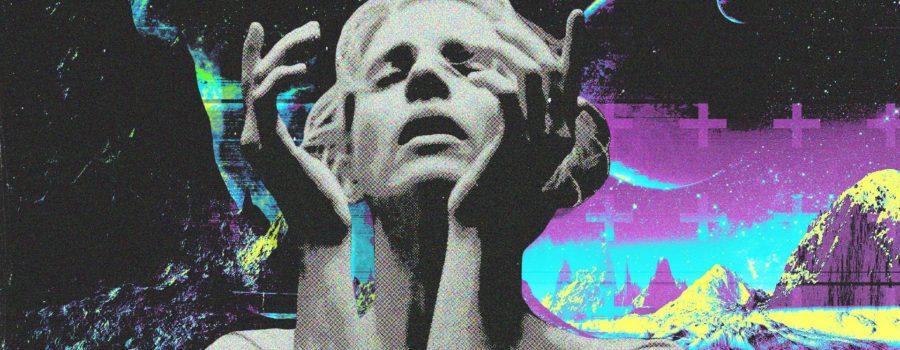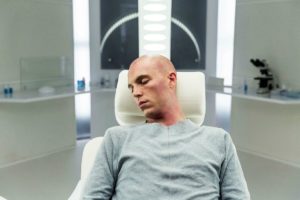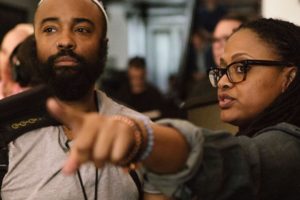[Published at Living Life Fearless] The Netflix conglomerate has made its lion’s share of questionable creative calls over the course of the seven-year span since the launch of its first original content. However, arguably, none such call from the powers that be at the streaming giant has been as controversial as the cancellation of the increasingly popular and compellingly enigmatic series The OA. The show, whose heterodox ideas to countering the harsh realities of our world, unconventional narrative, deconstruction of the traditional Strong Female, treatment of young male characters, and exploration into the remnants of a world that exponentially-evolving technology has left in its dust, spawned scintillating theories from fans, critics, and detractors alike; it was a cultural sensation that lives on in its new cult classic guise, with populations of fans in almost every corner of the world still passionately pleading with whomever may or may not be reading their plethora of “#SaveTheOA” social media comments at the Netflix headquarters in Los Gatos, California.

Alas, with 19 offices across 14 countries, more often than not, profit takes precedence over creativity at Netflix. Originally planned for five seasons (five seasons to represent the five movements of the dimension-hopping dance within the show), The OA was abruptly cancelled after a seemingly successful second season. It was a considerable blow to original sci-fi television, the vast majority from which The OA stands out boldly in a league of its own. Among the gold mine of brilliant narratives, character arcs, themes, motifs, symbolism, and hidden messages in The OA, this piece focuses on one particularly mysterious and elusive character. One hardly featured throughout the show, but whose impact cannot be understated to the larger meaning of its plot. She is Khatun, keeper of the five movements. Often overlooked as another visual idiosyncrasy employed by creators Brit Marling and Zal Batmanglij — a catalyst to move the plot forward whenever Prairie/The OA needed guidance in part one — she is, in fact, the most integral character to the fabric of the originally-planned structure of the series. It’s likely that Khatun would have been revealed to be related to Prairie/The OA due to her physical similarities to her father, Roman.
Khatun is featured prominently in two metaphysical sequences in The OA. Within these scenes, the viewer catches brief glimpses of written passages in German Braille on the character’s face. When compiled together, translated, and the blanks filled in, Khatun’s face reads, “Who, if I cried out, would hear me among the hierarchies of angels?” From poet Rainer Maria Rilke’s “Duino Elegies.” One of the main themes shared in both “Duino Elegies” and The OA is that of the limitation of humankind’s fractured consciousness. In the poem, Rilke describes the beauty of understanding the mysteries of the world as, “[n]othing but the beginning of terror, which we are barely able to endure, and we are so awed because it serenely disdains to annihilate us.”
The Esoteric Journey
There’s a story that Pierre Ruskin recounts to Hap (Jason Isaacs) in part two of The OA during a therapy session about The Medium, The Engineer, and the mystical House. The House was built in 1910 by The Engineer, who capitalized on the fortuitous fecundity of the Gold Rush, for his wife, The Medium, emblematic of the Victorian resurgence of the occult. The Medium felt something amiss atop the House’s storied foundation; they discovered a natural spring, formerly a holy site of the Ohlone Tribe, which was said to give the Ohlone shamans a “god’s eye view.” In an effort to protect their discovery, The Engineer designed the house like a puzzle; the “worthy” who solve it have the privilege to view the other side of the Rose Window in the attic, and the “unworthy” stay trapped within The House’s walls.
The Engineer built The House based on The Medium’s nightly dreams. When they moved in, he wanted to solve the puzzle himself, from beginning to end, despite The Medium vehemently advising against it. One day, she witnessed The Engineer collapsed through the open Rose Window from the streets of Nob Hill, San Francisco. Alas, to get to him in the attic, she would have to ascend the puzzle to get to the other side of the Rose Window. She suspected her husband had lost himself to whatever he saw. She was convinced that someday, somebody could withstand the view from the Rose Window and revive her husband from his coma, but nobody ever did. He fell victim to the beauty that the Rose Window offered a mere peak into. He was “so awed because it serenely [disdained] to annihilate [him].” The beauty was too much to fathom for his fractured mind.
We wouldn’t be able to fathom that our reality may not be the true one, per se, or that we may share an existence with our other selves
This terrifying beauty The Engineer witnessed on the other side of the Rose Window is the “revelation,” the “god’s eye view” in The Medium and The Engineer’s story, which is revealed to be a meta-reality of The OA being filmed within the show; essentially an interdimensional, Truman Show-esque unveiling for anyone looking outside the Rose Window. It would be akin to realizing that our dimension is merely one of infinite parallel ones, enough to drive humankind insane due to the limitation of our consciousnesses; we wouldn’t be able to fathom that our reality may not be the true one, per se, or that we may share an existence with our other selves in the aforementioned infinite parallel dimensions. It would fundamentally corrupt the framework of our minds.
This concept is also what Rilke’s passage on Khatun’s face refers to; the poem at once alludes to the necessity of the human mind to expand its consciousness in order to tolerate fathoming the journey into further dimensions, while also acknowledging the inexplicable beauty of the image of the Angel, of which Khatun and Prairie/The OA appear to unequivocally represent, acting as liaisons into the unknown peripheries of our world and beyond, readying both The OA’s characters and its viewers for an increasingly esoteric journey (had the show not been canceled).

NETFLIX
“You’re so right to bring up that poem.” Marling told me in an interview. “What’s so stunning about that poem is that the vision of the Angel as a moment of also terror that threatens to unravel you because it’s unraveling all the scaffolding in your mind for how you perceive reality, and then you’re having this moment in which it is shattered.”
Indeed, when Karim finally ascends the puzzle that is The House and glances out of the Rose Window, he not only peers into the the next dimension, but he also endures the terror of observing the striking beauty of The Original Angel (The OA) in her purest form, finally understanding her purpose in and importance to the grand scheme of Marling and Batmanglij’s noir-soaked world. Prairie/The OA isn’t indestructible, as we learn at the end of Karim’s vision. She is soft-spoken, outspoken, kind, empathetic, vulnerable, and yes, strong, but there are infinite other qualities within her that constitute power and fortitude beyond physical strength. She is the hero we need in our fantasies. She is the hero we need in the stories we tell our children. She is the hero we need in our reality.
In an insightful op-ed for The New York Times titled, “I Don’t Want to Be The Strong Female Lead,” Marling explains: “It turns out these boys need to hear Prairie’s story as much as she needs to tell it. For the boys face their own kind of captivity: growing up inside the increasingly toxic obligations of American manhood.” For some characters and viewers alike relatively trapped within these toxic confines of the traditional American man, the message of Rilke’s “Duino Elegies” further extends to the constraints of binary gender roles and identities – another notable theme in The OA.
She is the hero we need in our fantasies. She is the hero we need in the stories we tell our children.
Speaking of gender roles, Prairie/The OA’s father, Roman, is largely absent from his daughter’s life. However, his absence is shrouded in mystery, sidestepping the clichéd, “deadbeat dad” narrative. He has an unspoken connection to the otherworldly. Interestingly, Roman also has German Braille on his cheek, which reads, “five as leere jene,” or, “five empty ones,” signifying the five vessels, or people required to perform the five movements, as well as the five dimensions that The OA was scheduled to take the audience to in each season. Roman is seen in the same vision as Khatun, upon when we are first introduced to her, indicating he could be another fellow “traveler.” Viewers also know that he’s been to Hap’s Treasure Island Research Center.
In chapter two of part one, if one listens closely to the background noise on Roman’s end during his phone call with a younger Prairie/The OA (at that time, still Nina), there is a rather uncommonly peaceful combination of distinct sounds consisting of waves crashing and breaking on a rocky shore, foghorns, wind, and seagulls. It is the identical background noise that Homer hears during his near death experience (NDE) in chapter four of part one, capturing what could be very few places in the world other than the San Francisco Bay (living here, I know that background noise like the back of my hand). Furthermore, part two confirms the setting of Homer’s NDE as San Francisco. Perhaps Roman’s only way of evading The Voi’s (which literally translates to “howl” from Russian, as in wolf, a recurring visual motif in the show, as in Veles, the Slavic god of the underworld — another supernatural connection to Roman) capture, the criminal organization that attempted his assassination and is responsible for Prairie/The OA’s first NDE and initial blindness, was to interdimensionally “travel.” It may have been something he had already experimented with before encountering The Voi, explaining how he met Khatun and, later, obtained similar German braille markings on his face.See also
“Brit and I always imagined that you would jump dimensions.” Batmanglij explained to me. “We’re not being Quantum Leap, so we’re not going to repeat ourselves. You’re jumping dimensions in two dimensions, and we’re about to add a third access.” In making sure to not repeat themselves, Marling emphasized that the access was a “diagonal rather than a horizontal.” That third access turns out to be the dimension of Scott’s (Will Brill) NDE, which he describes in part one; the dimension that Karim witnessed through the Rose Window. Subsequent seasons likely would have played with even more abstract accesses.
Best Laid Plans
Marling and Batmanglij fully intended to revisit Khatun, the themes of “Duino Elegies, and completely flesh out Roman’s arc (they explained to me that Roman would return after part two) over the next three seasons of The OA. What may have seemed like a relatively aimless, meandering story without an overarching vision to certain viewers, was actually a methodically-mapped out, five-season plan, meant to gradually test the limits of the audience’s palatable commonsense as Marling and Batmanglij eased out more fantastical philosophical fodder each season, bit by bit, allowing the viewer to absorb the reality-bending plot, wrapping their minds around it at a pace at which their own fractured consciousness could readily permit.
The T.S. Eliot poem seen carved onto the walls of The House, echo Hap’s obsession for fleeing reality, The OA’s main theme, and the show’s planned narrative direction.
Marling and Batmanglij fully intended to revisit Khatun, the themes of “Duino Elegies, and completely flesh out Roman’s arc
“We shall not cease from exploration. And the end of all our exploring. Will be to arrive where we started. And know the place for the first time.”
Just as part two ended how The OA started, in a sense — on a set with lights, cameras, and actors — while appearing new, for the first time, in the eyes of the viewer (by providing a fictional snapshot of a behind-the-scenes recreation of The OA’s part two production), perhaps the five-season journey always ended where it started: The isolation of suburbia eternally present at the end of a proverbial tunnel of a series of interdimensional “traveling,” save for the figurative walls of the boys’ toxic masculine prison, gently eroded by the fleeting but indelible presence of Prairie/The OA, with Khatun as their unsung, unseen spiritual guide.






![‘Quincy’: Directors Rashida Jones & Al Hicks Discuss Scouring Through Hours Of Footage & The Bittersweet Ending [Interview]](https://www.makingacinephile.com/wp-content/uploads/2018/12/QuincyJones-300x200.jpg)

Leave a Reply
Your email is safe with us.